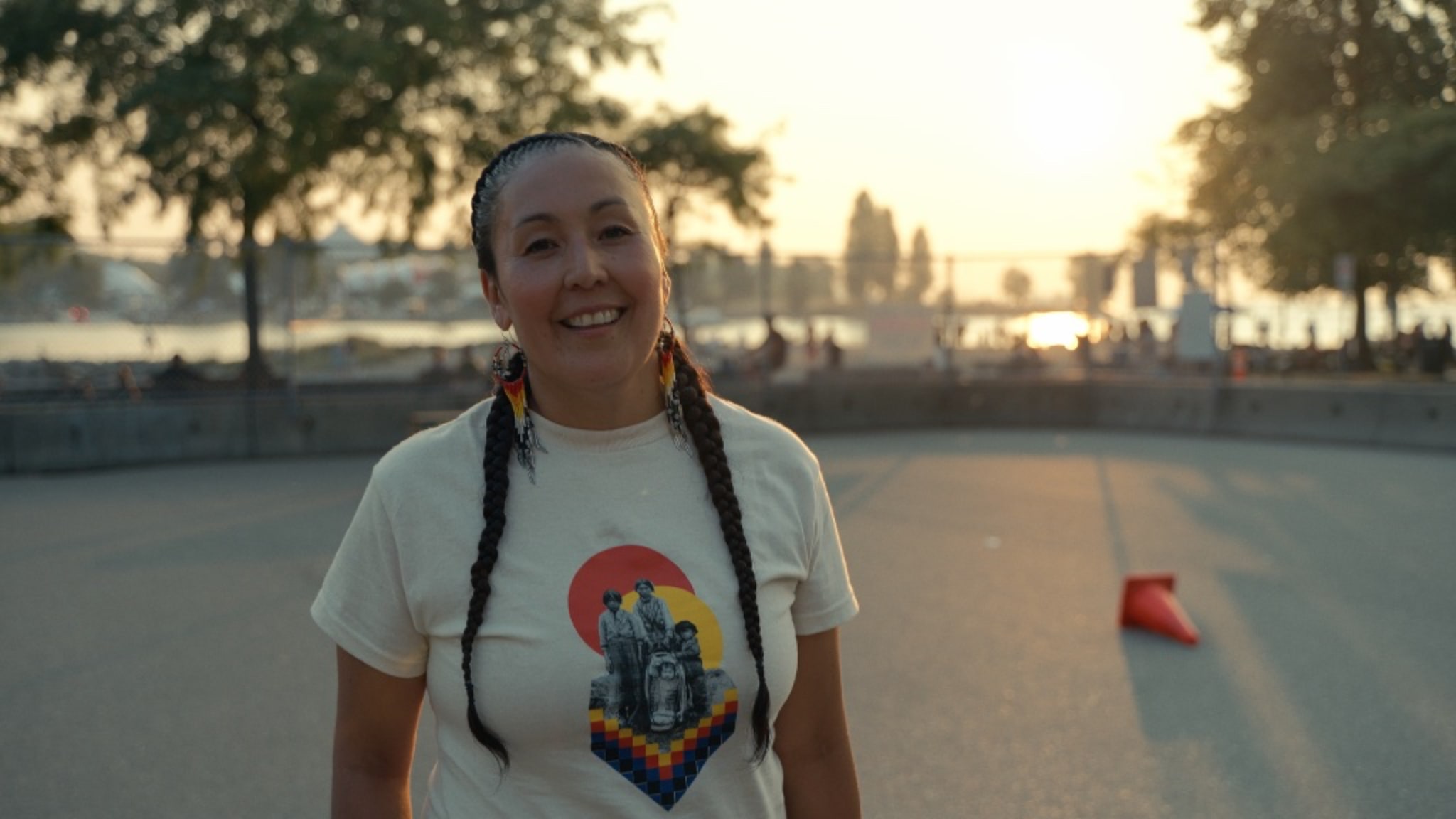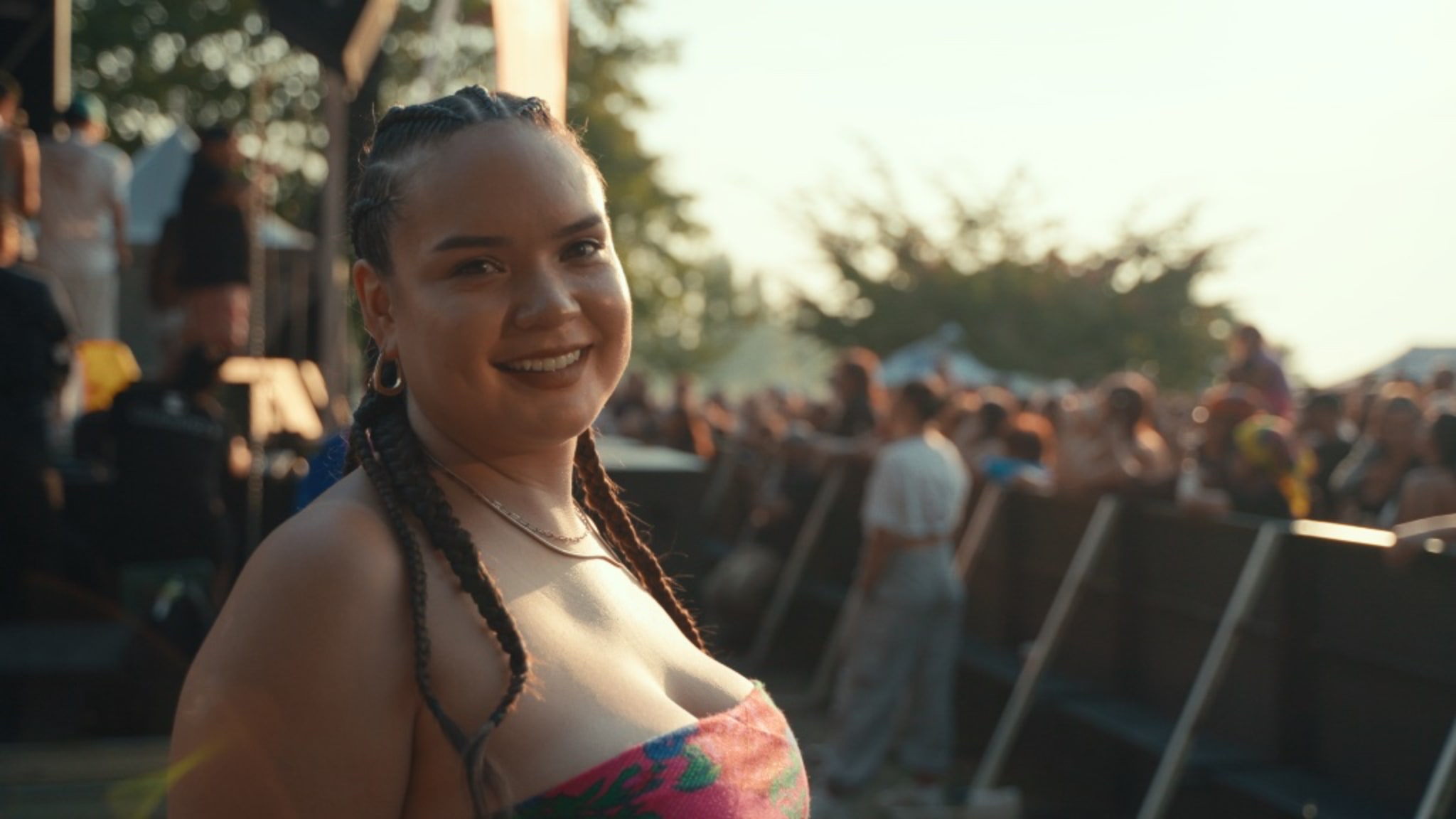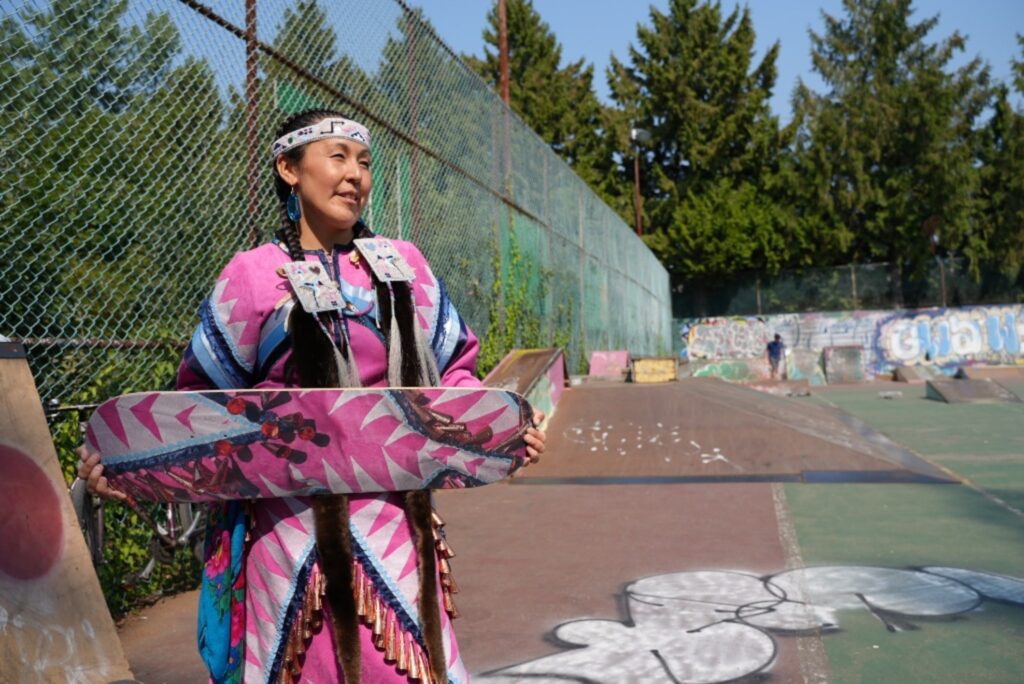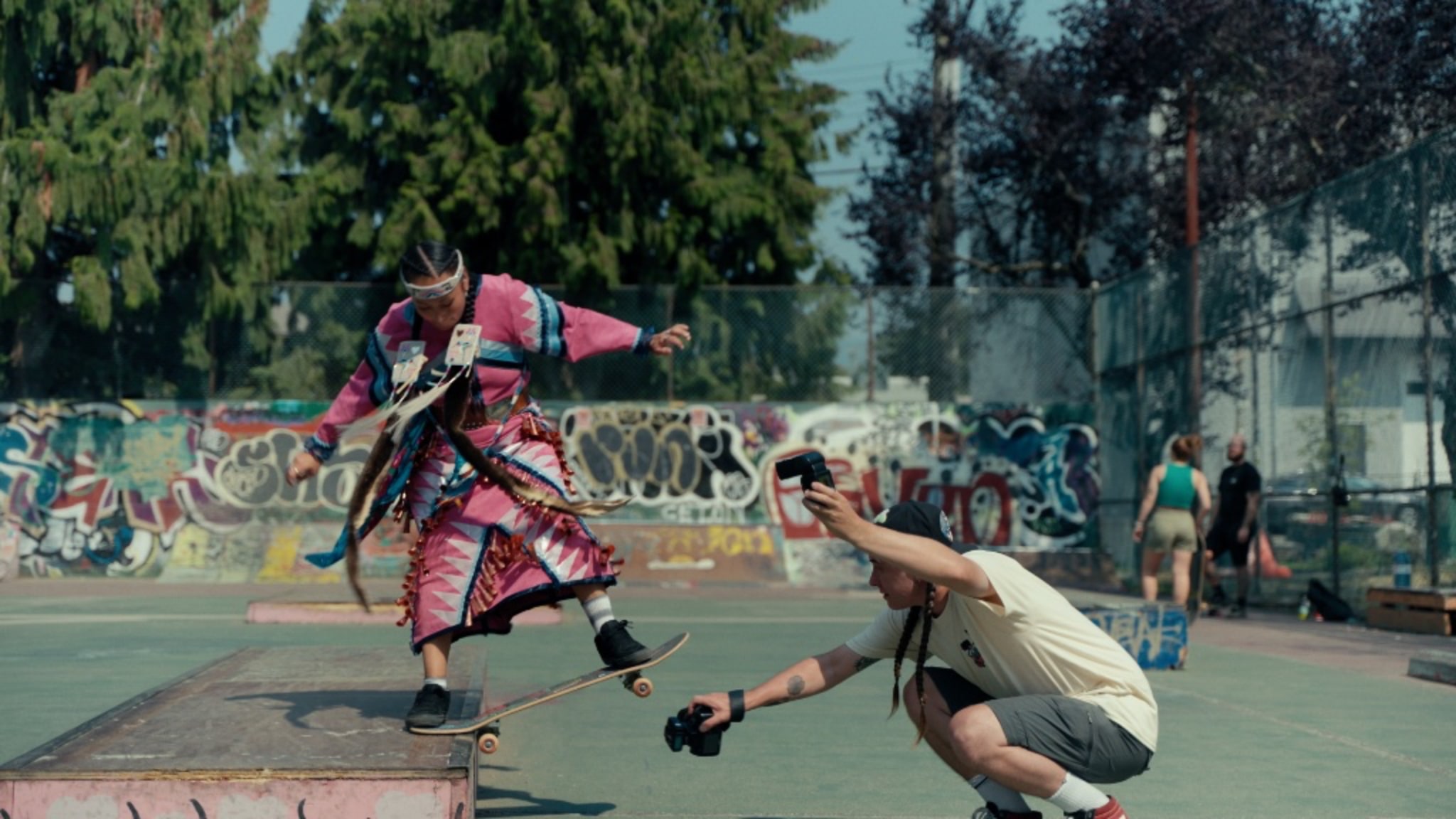7
EPISODE SEVEN : VANCOUVER
OUR STORYTELLERS

ROSE

HAYLEY
DANCE COSTUME
OR GARMENT
milhuwutum
(Coast Salish)
In Indigenous communities across Turtle Island, dancing has forever been a means of celebrating collective identity and an essential outlet for individual and community healing.
Dance traditions vary immensely from nation to nation and have evolved greatly over time, often representing the lived experience of the communities they originate from. The jingle dress dance is one such tradition.
Originating in Anishinaabeg communities at the start of the 20th century during the 1918 Spanish influenza pandemic, the dance spread to many groups across the continent, becoming a source of immense pride and a practice deeply rooted in its power to heal.
It is said that a medicine man’s daughter fell ill and he was told by his spirit guides to craft a dress that would heal her once she danced in it. The community gathered together to witness the healing power of the dress, bringing its dancer back to good health.


The colourful dresses are adorned with over 300 rolled metal cones that make a melodic sound when they are danced in. Originally, these jingles were made with chewing tobacco can lids and rolled into cones, highlighting the resourcefulness of their makers.
Although Indigenous celebrations and dances were banned by colonial authorities in both Canada and the United States for many decades, these practices were never snuffed out. Oftentimes, dances were held in secret and passed down through families, surviving waves of forced displacement, residential schools and assimilation.
Many dancers have attested to the power the jingle dresses have in helping them get through loss, trauma and grief. The shimmering of the jingles in the light and the enchanting sound they create are said to spread the healing powers both to the dancer and all those who witness it.
This became abundantly clear during the COVID-19 pandemic when women and girls across Turtle Island danced in their jingle dresses and shared them online to help cope with the crisis and to pray for their community’s return to good health.
The jingle dress has long been a symbol of resilience and shared strength in Indigenous communities, continuing its essential role as a powerful catalyst for positive change and collective healing.

CONTACT US
Have a story about your own little big community?
Reach out and let us know! We would love to help you tell it.
